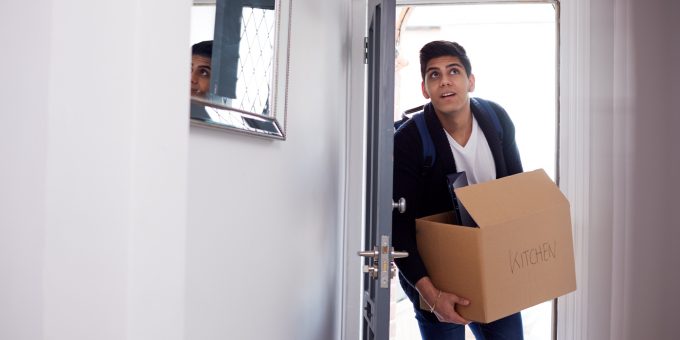
iStockPhoto.com // monkeybusinessimages
Who’s Your Safety Net?
COVID-19 campus closures in March 2020 led many—but not all—college students to move back in with their parents. Why did some students return home while others did not?
I’ve spent much of the past four years researching an answer to this question. The COVID-19 campus closures have held my interest because they offer a unique window into students’ and parents’ taken-for-granted understandings of their roles, the nature of adulthood, and who to turn to in times of crisis.
In a new study published in Socius, my collaborators Arielle Kuperberg, Joan Maya Mazelis, and I set out to understand the pandemic housing decisions of undergraduates attending two regional public universities in the United States. Both institutions included a substantial number of students who would be considered nontraditional undergraduates due to their age (24+) and/or relationship status (living with a partner); this allowed us to examine how these characteristics influenced students’ choices.
As one might expect, students living in dorms—who directly lost housing in the shutdowns—were more likely to move in with a parent than were their off-campus peers (66% vs. 18%). Among off-campus students, those who experienced employment disruptions due to the pandemic were more likely to move in with a parent, suggesting that lost income created a comparable situation of material need—and led students to seek support from their parents.But housing and financial needs weren’t the whole story. As other sociologists who study financial decision-making have shown, decisions to seek help from friends and family can rarely be reduced to a simple economic calculation. Different types of relationships come with different expectations for support, and even within a relationship, perceptions of what is natural, reasonable, or desirable evolve over time and vary across situations.
After accounting for housing and job loss, we found that students who might be considered more “adult” by conventional American standards, whether due to their age or because they were living with a romantic partner, were less likely to move in with a parent when the pandemic hit. These findings illustrate how the role of the parental home diminishes throughout the transition to adulthood as children grow older and form partnerships that provide new potential sources of support. We also found that students living with a sibling or extended family member were less likely to move in with a parent, suggesting that these relatives, like romantic partners, provided an alternative safety net for some students.
In a previous study, I documented social class divides in undergraduates’ expectations for parental support in the wake of the COVID-19 campus closures. This new study adds another piece to the puzzle, illuminating how parents’ roles also varied between students in different life stages and with different constellations of close social ties. Understanding the safety nets that undergraduates relied on during the pandemic provides valuable insight into how expectations for parents’ roles change over time and influence young adults’ responses to crises.
Elena G. van Stee is a graduate student in the Department of Sociology at the University of Pennsylvania. The Blog Editor for Contexts, she studies culture and inequality, focusing on social class, families, and the transition to adulthood.
